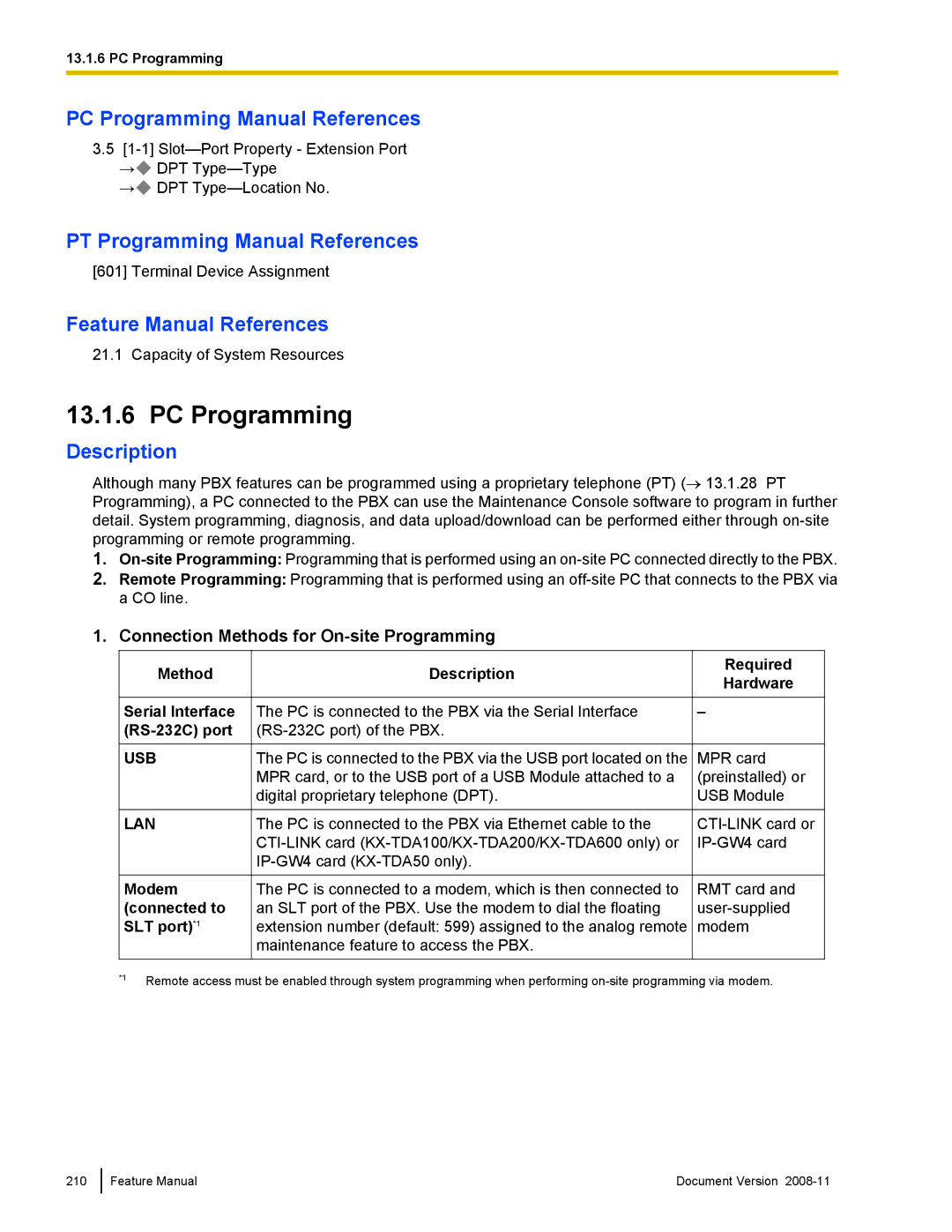
13.1.6 PC Programming
PC Programming Manual References
3.5
→![]() DPT
DPT
→![]() DPT
DPT
PT Programming Manual References
[601] Terminal Device Assignment
Feature Manual References
21.1 Capacity of System Resources
13.1.6 PC Programming
Description
Although many PBX features can be programmed using a proprietary telephone (PT) (→ 13.1.28 PT Programming), a PC connected to the PBX can use the Maintenance Console software to program in further detail. System programming, diagnosis, and data upload/download can be performed either through
1.
2.Remote Programming: Programming that is performed using an
1. Connection Methods for On-site Programming
Description
The PC is connected to the PBX via the Serial Interface
The PC is connected to the PBX via the USB port located on the MPR card, or to the USB port of a USB Module attached to a digital proprietary telephone (DPT).
The PC is connected to the PBX via Ethernet cable to the
The PC is connected to a modem, which is then connected to an SLT port of the PBX. Use the modem to dial the floating extension number (default: 599) assigned to the analog remote maintenance feature to access the PBX.
Required
Hardware
–
MPR card (preinstalled) or USB Module
RMT card and
*1 | Remote access must be enabled through system programming when performing |
|
210
Feature Manual | Document Version |
